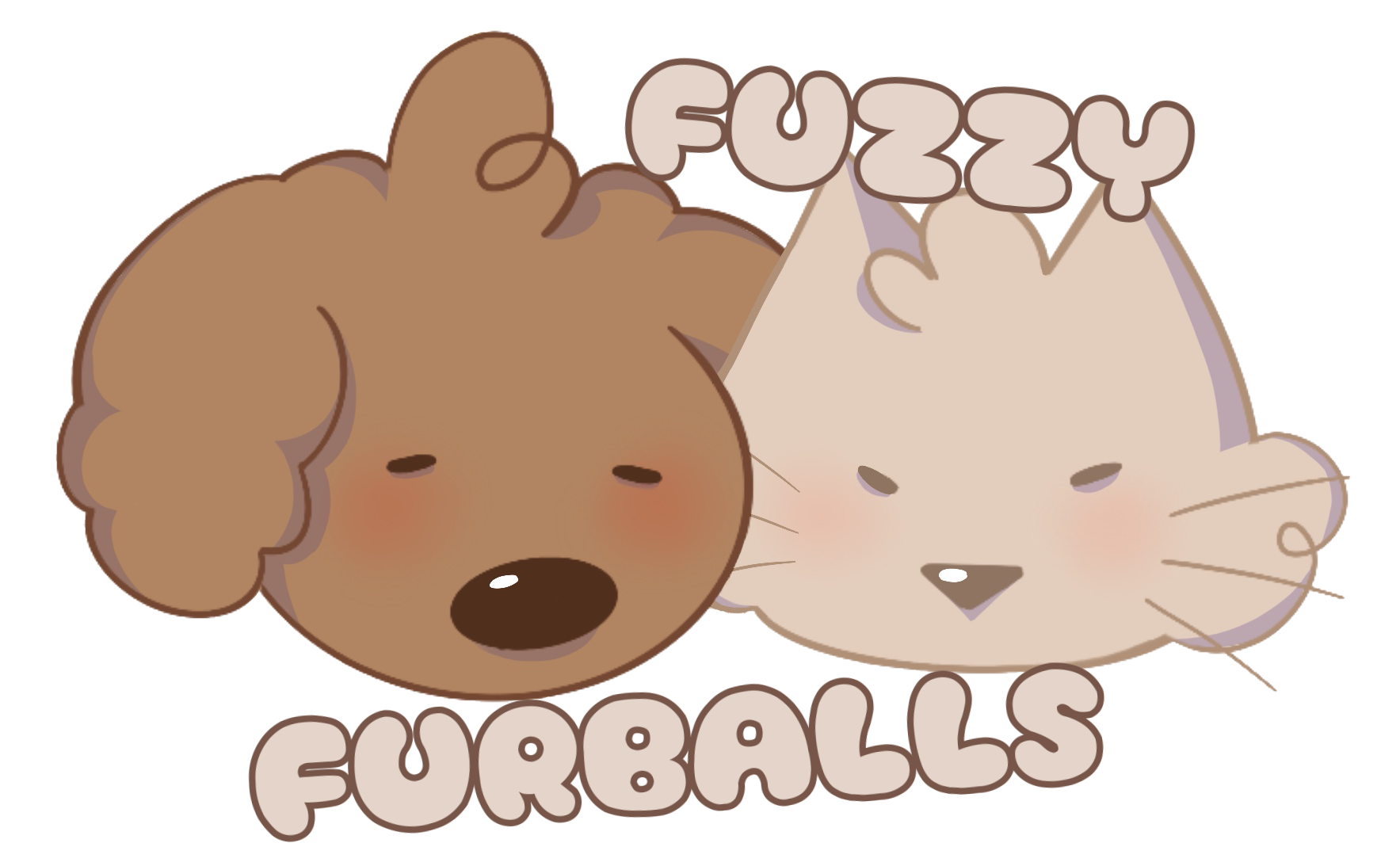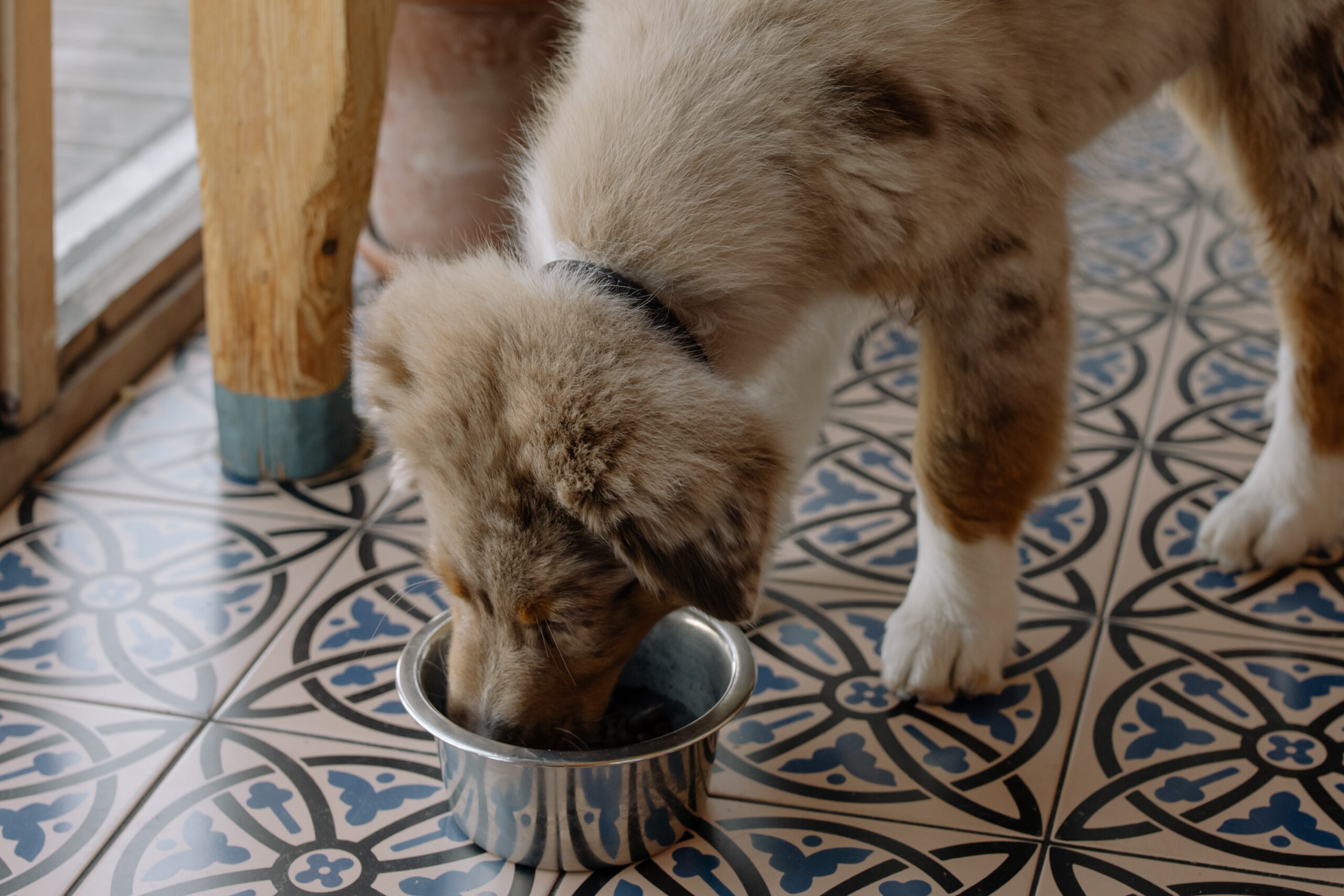The importance of mental stimulation for dogs
Dogs are not just our loyal companions; they are highly intelligent creatures with complex emotional and cognitive needs. As responsible pet owners, it is crucial to recognize that meeting these needs goes beyond providing physical exercise and basic care. Mental stimulation plays a pivotal role in keeping dogs mentally sharp, emotionally balanced, and happy.
Like humans, dogs have an innate desire to explore, learn, and solve problems. When they lack adequate mental engagement, they can become bored, restless, and even develop behavioral issues. Unfortunately, boredom in dogs is a common problem that often leads to destructive behaviors, excessive barking, and attention-seeking actions.
Benefits of mental exercise for a dog’s overall well-being
Mental stimulation is not just a luxury for dogs; it is a necessity. Engaging their minds through various activities and challenges offers a multitude of benefits for their overall well-being:
- Cognitive development: Mental exercises stimulate a dog’s brain, promoting cognitive growth and enhancing their problem-solving skills. This can be particularly important for puppies, as it sets a solid foundation for their future learning abilities.
- Emotional fulfillment: A mentally stimulated dog experiences a sense of fulfillment and accomplishment, leading to reduced stress and anxiety levels. It can also strengthen the bond between the dog and its owner, as they work together on various tasks.
- Physical health: Mental exercise can complement physical activities, contributing to a balanced and healthy lifestyle. When dogs are mentally engaged, they are more likely to maintain a healthy weight and avoid obesity-related issues.
- Behavior improvement: Providing ample mental stimulation can help prevent and alleviate behavioral problems such as chewing, digging, and excessive barking. A mentally fulfilled dog is less likely to resort to destructive behaviors as a way of coping with boredom.
Overview of the article’s content
This article aims to guide dog owners on the importance of mental stimulation and how to effectively provide it for their furry friends. We will explore various types of mental exercises and activities suitable for dogs of all ages and breeds. From interactive games and puzzle toys to scent-based challenges and training exercises, we will offer a wide range of options to keep your canine companion’s mind engaged.
Additionally, we will address specific considerations for multi-dog households and how to accommodate dogs with special needs or behavioral issues. Understanding the relationship between mental stimulation and behavior correction will help readers utilize mental exercises as a powerful tool for addressing problem behaviors.
Whether you are a first-time dog owner or have had canine companions for years, this article will equip you with practical tips and ideas to create a mentally stimulating environment that enhances your dog’s quality of life. Remember, a happy and mentally fulfilled dog is a healthier and better-behaved companion, and investing in their mental well-being will undoubtedly strengthen the bond you share.
Understanding Canine Mental Stimulation
What is mental stimulation for dogs?
Mental stimulation for dogs involves engaging their minds in various activities that challenge their intellect, senses, and problem-solving abilities. It goes beyond mere physical exercise and includes tasks that require mental effort and focus. Just like humans, dogs thrive on mental challenges that keep their brains active and stimulated.
Mental stimulation can take many forms, such as puzzle toys, interactive games, scent-based activities, obedience training, and environmental enrichment. These activities encourage dogs to think, learn, and explore, which not only prevents boredom but also provides a sense of fulfillment.
How dogs’ minds work and why they need it
Dogs are intelligent beings with remarkable cognitive capabilities. Their brains are wired to process information, make decisions, and adapt to their surroundings. Understanding how dogs’ minds work can shed light on why they require mental stimulation:
- Instinctual nature: Dogs are descendants of wolves, and their instincts drive them to hunt, scavenge, and problem-solve to survive. Domestication hasn’t diminished these instincts; rather, they need to be channeled appropriately through mental exercises.
- Active learning: Dogs are eager learners, and their minds are constantly seeking new challenges. Mental stimulation taps into this inherent desire to explore and understand the world around them, promoting ongoing learning and development.
- Mental aging: Just like humans, dogs experience cognitive aging as they grow older. Engaging their minds through mental exercises can help keep their cognitive faculties sharp and potentially delay cognitive decline in senior dogs.
- Emotional well-being: Mental stimulation not only satisfies a dog’s curiosity but also contributes to their emotional well-being. Boredom and mental inactivity can lead to stress, anxiety, and even depression in dogs.
The link between mental and physical health in dogs
Mental and physical health are interconnected aspects of a dog’s overall well-being. Mental stimulation complements physical exercise in several essential ways:
- Energy release: Engaging a dog’s mind through challenging activities helps release pent-up mental energy, which can reduce restlessness and hyperactivity.
- Enhanced physical performance: Dogs that receive regular mental stimulation are often more focused, coordinated, and responsive during physical activities like walks and playtime.
- Weight management: Mentally stimulated dogs are less likely to engage in overeating or unhealthy snacking due to boredom, which helps in maintaining a healthy weight.
- Reduced risk of behavior problems: Dogs that receive sufficient mental stimulation are less likely to develop behavioral issues arising from frustration or boredom. This can lead to a happier and more harmonious relationship between dogs and their owners.
Incorporating a balance of both physical and mental exercises into a dog’s daily routine is vital for their overall health and happiness. Providing mental stimulation is not just a way to pass the time; it is a responsibility that contributes to a fulfilled and thriving canine companion.
Signs of a Mentally Understimulated Dog
Behavioral cues of boredom and restlessness
As responsible dog owners, it’s crucial to be attuned to signs of mental understimulation in our furry friends. A bored or mentally understimulated dog may exhibit the following behavioral cues:
- Destructive behaviors: Dogs left without adequate mental stimulation may resort to destructive activities such as chewing furniture, shoes, or household items.
- Excessive barking: Boredom can lead to incessant barking as a way for dogs to express their frustration or seek attention.
- Digging: Dogs may start digging in the yard or around the house when they’re bored, trying to find an outlet for their pent-up energy.
- Restlessness: If a dog appears constantly fidgety or unable to settle, it might be an indicator of mental restlessness.
- Attention-seeking behaviors: Dogs seeking mental stimulation may become overly demanding of their owner’s attention, following them around or pawing for interaction.
- Lack of interest in toys or activities: A dog that appears uninterested in toys, games, or usual activities may be signaling a need for new and engaging experiences.
Potential consequences of prolonged mental inactivity
Neglecting a dog’s mental stimulation can lead to a variety of negative consequences that impact both the dog and its owner:
- Behavioral problems: Prolonged mental inactivity can trigger or exacerbate behavioral issues, including anxiety, compulsive behaviors, and aggression.
- Decline in overall health: Mental understimulation can lead to lethargy and a lack of motivation to engage in physical activities, which may contribute to weight gain and other health issues.
- Damaged relationships: A dog that doesn’t receive enough mental stimulation may become disengaged and disconnected from its owner, leading to a strained bond between the two.
- Escaping or roaming behaviors: Dogs seeking stimulation may attempt to escape their environment, leading to potential dangers such as getting lost or involved in accidents.
Common mistakes to avoid when addressing mental stimulation
When attempting to provide mental stimulation for dogs, it’s essential to avoid common mistakes that could hinder their progress:
- Overwhelming complexity: Starting with overly challenging puzzles or activities can frustrate the dog, leading to disinterest rather than engagement.
- Lack of consistency: Inconsistency in providing mental stimulation can confuse the dog and make it harder for them to establish a routine.
- Ignoring individual preferences: Dogs have unique preferences and strengths. It’s essential to cater to their specific interests when choosing mental stimulation activities.
- Neglecting physical exercise: Mental stimulation should complement, not replace, physical exercise. Neglecting physical activity can lead to restlessness and further behavioral issues.
- Using punishment: Punishing a dog for not engaging in mental stimulation can have adverse effects, creating a negative association with mental exercises and causing anxiety.
In conclusion, understanding the signs of mental understimulation in dogs allows us to take proactive steps in providing enriching experiences for our canine companions. By addressing their cognitive needs and avoiding common pitfalls, we can create a harmonious environment that fosters a happier, healthier, and more well-adjusted dog.
Types of Mental Stimulation for Dogs
Puzzle toys and interactive games
- Benefits and considerations for choosing puzzle toys
Puzzle toys are an excellent way to challenge a dog’s problem-solving abilities and keep their minds engaged. Some benefits of using puzzle toys include:
- Mental exercise: Puzzle toys require dogs to use their brains to figure out how to access treats or toys, providing mental stimulation and preventing boredom.
- Slow feeding: Some puzzle toys can be used as slow feeders, encouraging dogs to eat more slowly and aiding in digestion.
- Independent play: Puzzle toys can entertain dogs when owners are busy or away, helping to alleviate separation anxiety.
When choosing puzzle toys, consider the following:
- Difficulty level: Start with easy puzzles and gradually increase the complexity as the dog becomes more proficient.
- Size and durability: Ensure the toy is appropriate for the dog’s size and strength, and opt for durable materials to withstand enthusiastic play.
- Safety: Choose puzzle toys that are free from small, loose parts that could be swallowed or pose a choking hazard.
- DIY puzzle toy ideas for budget-conscious owners
Puzzle toys need not be expensive. For budget-conscious owners, DIY options can be just as effective and fun for the dog:
- Muffin Tin Treat Game: Place treats or kibble in a muffin tin and cover them with tennis balls. The dog must figure out how to remove the balls to access the treats.
- Snuffle Mat: Create a snuffle mat by tying fleece strips to a rubber mat or grid. Hide treats among the strips, and the dog has to use its nose to find them.
- Cardboard Box Puzzles: Place treats in small cardboard boxes and let the dog sniff out the goodies. You can vary the complexity by adding layers or hiding multiple boxes.
Nose work and scent-based games
- The power of a dog’s sense of smell
Dogs possess an extraordinary sense of smell, and engaging them in scent-based activities taps into this natural ability. Nose work games provide mental stimulation and satisfy a dog’s innate desire to use its nose for exploration.
- How to introduce scent-based activities
- Scent Trails: Dab a favorite scent (e.g., vanilla extract or essential oil) on the floor in a trail leading to hidden treats or toys.
- Find the Treat: Encourage the dog to stay while you hide treats around the house. Release them and use the command “find it” to initiate the search.
- Scented Toys: Introduce new scents to familiar toys to pique the dog’s interest and challenge their olfactory senses.
Training and obedience exercises
- Engaging a dog’s mind through learning
Training and obedience exercises not only instill good manners but also provide mental stimulation through learning and communication with the owner.
- Basic Commands: Teach and reinforce essential commands like sit, stay, come, and leave it. Practicing these commands regularly keeps the dog mentally engaged.
- Advanced Tricks: Once the dog has mastered the basics, introduce more complex tricks or behaviors to continue mental development.
- Positive reinforcement techniques for effective training
Positive reinforcement is key to successful training. Reward the dog with treats, praise, or playtime when they perform desired behaviors, encouraging them to repeat those actions.
Enrichment activities and environmental changes
- Creating a stimulating environment at home
Enriching a dog’s living space can provide ongoing mental stimulation:
- Rotate Toys: Keep the dog’s toys on rotation, introducing new ones periodically to maintain their interest.
- Treat Dispensing Toys: Use treat-dispensing toys or puzzle feeders during mealtime to make feeding more engaging.
- Sensory Garden: If possible, create a sensory garden in the backyard with different textures, scents, and plants for the dog to explore.
- Rotating toys and activities for continued interest
Aim to keep activities varied and engaging. Rotating puzzle toys, scent-based games, and training exercises ensures the dog encounters new challenges regularly.
By incorporating a combination of puzzle toys, nose work, training exercises, and environmental enrichment, dog owners can provide a diverse array of mental stimulation, keeping their furry companions sharp, content, and mentally fulfilled.
Incorporating Mental Stimulation into Daily Routine
Balancing mental and physical exercise
Achieving a balance between mental and physical exercise is crucial for a well-rounded and fulfilled dog. While physical activities like walks, runs, and playtime are essential for maintaining physical health, mental stimulation complements these activities and enhances a dog’s overall well-being.
Consider the following tips for achieving the right balance:
- Combine Activities: During walks, incorporate mental exercises such as stopping for short training sessions or allowing the dog to sniff and explore its surroundings actively.
- Use Puzzle Toys: Use puzzle toys to engage the dog’s mind while you’re busy or away, providing a mental workout alongside their physical exercise routine.
- Rotate Activities: Rotate between different mental stimulation activities throughout the week to keep things fresh and exciting for the dog.
Scheduling regular mental stimulation sessions
Consistency is key when providing mental stimulation to dogs. Set aside dedicated times each day for mental exercises, just as you would for physical activities. Creating a routine helps the dog anticipate and look forward to these sessions, building excitement and focus.
- Morning Wake-Up: Start the day with a short training session or a puzzle toy to kickstart the dog’s mental activity.
- Midday Break: If you’re away during the day, leave a puzzle toy or engage a dog sitter to interact with the dog and provide mental stimulation.
- Evening Wind-Down: Use scent-based games or training exercises to wind down the dog before bedtime, promoting a sense of satisfaction and relaxation.
Integrating mental games during walks and playtime
Make the most of daily walks and playtime by incorporating mental games that engage the dog’s mind while they enjoy physical exercise:
- Sniff Walks: Allow the dog to explore and sniff during walks, as this is a mentally enriching activity that stimulates their senses.
- Interactive Fetch: While playing fetch, ask the dog to perform a simple command like “sit” or “drop it” before retrieving the toy, adding an extra mental challenge.
- Hide and Seek: During playtime, hide behind a tree or furniture and call the dog to find you. This game encourages the use of their scenting abilities and reinforces recall training.
Remember that mental stimulation is not solely about the time spent on activities but also about the quality of engagement. Tailor the level of difficulty and duration of mental exercises to suit the dog’s individual needs and energy levels. Additionally, observe the dog’s response to different activities to identify their preferences and provide the most enjoyable experiences.
Incorporating mental stimulation into a dog’s daily routine not only prevents boredom and behavioral issues but also fosters a happier and more content canine companion. By striking a balance between physical and mental exercises and maintaining a consistent schedule, dog owners can ensure their pets lead enriched lives filled with curiosity, learning, and joy.
Mental Stimulation for Specific Dog Breeds and Ages
Tailoring activities to match breed characteristics
Different dog breeds have distinct characteristics, instincts, and energy levels. To provide effective mental stimulation, it’s essential to tailor activities to match each breed’s unique traits:
- Working Breeds: Breeds like Border Collies and German Shepherds excel in problem-solving tasks and obedience training. Engage their minds with complex puzzles and challenging obedience exercises.
- Sporting Breeds: Retrievers and Pointers have a keen sense of smell and love retrieving games. Incorporate scent-based activities and interactive fetch games to keep them mentally engaged.
- Terriers: Terrier breeds are natural diggers and hunters. Use nose work games and hide treats in digging pits to satisfy their instincts.
- Toy Breeds: Smaller breeds may prefer smaller puzzle toys and activities that cater to their size while still offering mental challenges.
Addressing the needs of puppies and seniors
Tailoring mental stimulation to a dog’s age is vital, as puppies and seniors have different requirements:
- Puppies: Young pups are curious and eager to learn but have shorter attention spans. Short, frequent training sessions with basic commands and easy puzzles are ideal. Socialization with new experiences and environments also contributes to their mental development.
- Seniors: Older dogs may have reduced physical abilities but still benefit from mental exercises to keep their minds sharp. Use low-impact activities, such as gentle nose work or easy obedience tasks, to engage seniors and prevent cognitive decline.
Adapting for dogs with special requirements (e.g., disabilities, anxiety)
Dogs with special requirements, such as disabilities or anxiety, may need modified mental stimulation to suit their needs:
- Disabilities: For dogs with physical disabilities, focus on mental games that don’t require extensive physical activity. Scent-based activities or puzzle toys that can be accessed while lying down can be beneficial.
- Anxiety: Anxious dogs may benefit from calming mental exercises, such as nose work, to redirect their focus away from stress triggers. Gradually introducing new activities in a controlled environment can help build their confidence.
For all dogs, regardless of breed or age, it’s essential to observe their individual preferences and comfort levels. Some dogs may excel in specific types of mental stimulation, while others may not enjoy certain activities. Be flexible and willing to adapt the mental stimulation routine based on the dog’s response and feedback.
Moreover, consistency and positive reinforcement are crucial when working with dogs with special requirements. Patience and understanding go a long way in ensuring a successful and fulfilling mental stimulation experience for these dogs.
By considering the breed characteristics, age-specific needs, and any special requirements, dog owners can tailor their approach to mental stimulation, providing personalized and enjoyable activities that keep their furry companions mentally active, content, and emotionally balanced.
Mental Stimulation in Multi-Dog Households
Challenges and benefits of stimulating multiple dogs
Having multiple dogs in a household can present both challenges and unique opportunities for mental stimulation. Understanding the dynamics and individual needs of each dog is essential in ensuring that all dogs receive adequate mental engagement.
Challenges:
- Competition for resources: Dogs may compete for attention, treats, or toys, which can lead to stress and potential conflicts.
- Different energy levels: Each dog may have different energy levels and preferences for mental activities, requiring a varied approach.
- Attention distribution: Providing equal attention and mental stimulation to each dog can be challenging, especially if they have varying degrees of socialization or training.
Benefits:
- Social interaction: Multi-dog households provide ample opportunities for dogs to engage in interactive play and socialization, which can be mentally stimulating.
- Learning from each other: Dogs can learn new behaviors and tricks by observing and interacting with their fellow canine companions.
- Motivation and competition: Competition within the group can fuel enthusiasm and motivate dogs to participate actively in mental exercises.
Group activities and interactive play ideas
Engaging multiple dogs in mental stimulation activities can foster a harmonious and contented household. Here are some group activities and interactive play ideas that suit multi-dog households:
- Group Training Sessions: Conduct training sessions that involve all dogs simultaneously. This helps reinforce obedience, strengthens the human-dog bond, and promotes cooperation among the dogs.
- Tug-of-War: Supervised games of tug-of-war with a rope toy can be an enjoyable group activity that also provides a mental challenge.
- Scavenger Hunt: Hide treats or toys around the house or yard and let all dogs search together, encouraging friendly competition and cooperation.
- Obstacle Courses: Set up an obstacle course in the backyard or indoors using objects like hula hoops, cones, and tunnels. Guide the dogs through the course using treats and positive reinforcement.
- Group Scent Games: Engage the dogs in scent-based games together, such as finding treats hidden in various spots or identifying a specific scent among different objects.
It’s essential to maintain a positive and controlled environment during group activities. Pay attention to each dog’s behavior to ensure that all interactions remain friendly and playful. If there are any signs of tension or discomfort, separate the dogs and allow them to engage in individual activities to avoid conflicts.
Incorporating group activities and interactive play not only provides mental stimulation but also enhances the bond between dogs and their owners. Supervised play and training sessions in a multi-dog household contribute to a positive and enriching environment, fostering a sense of togetherness and shared experiences among the canine companions.
By considering the challenges and benefits of stimulating multiple dogs and implementing group activities that suit their individual needs, dog owners can create a stimulating and harmonious environment that caters to each dog’s mental well-being and overall happiness.
Tips for When You’re Away
When you need to be away from your furry companion, ensuring they remain mentally stimulated is essential to prevent boredom and separation anxiety. Here are some tips to keep your dog mentally engaged when you’re not around:
Choosing appropriate toys for solo play
Selecting the right toys for your dog’s solo playtime can make a significant difference in keeping them mentally active:
- Puzzle Toys: Invest in durable puzzle toys that dispense treats or require problem-solving to keep your dog entertained and mentally engaged.
- Chew Toys: High-quality chew toys, such as Kongs or nylon bones, can provide long-lasting mental and physical stimulation while satisfying their natural urge to chew.
- Interactive Plush Toys: Some plush toys have hidden squeakers or crinkle material that engages your dog’s curiosity and keeps them entertained during solo play.
Rotate toys regularly to keep them fresh and exciting for your dog, preventing boredom from setting in due to repetitive play with the same toys.
Automated and interactive gadgets for mental engagement
Innovative technology offers a range of automated and interactive gadgets designed to stimulate your dog’s mind while you’re away:
- Treat-Dispensing Cameras: Certain pet cameras come with a treat-dispensing feature that allows you to reward your dog remotely when they perform specific actions, such as responding to commands or playing with toys.
- Electronic Puzzle Feeders: These gadgets have interactive touchpads or buttons that trigger treat release when your dog solves the puzzle or presses the correct buttons.
- Automated Laser Pointers: Laser toys that move around automatically can engage your dog’s chase instinct and provide mental stimulation during play.
Ensure that any interactive gadgets you use are safe, easy to operate, and suited to your dog’s size and behavior.
If your absence will be for an extended period, consider hiring a dog sitter or using a doggy daycare facility for added socialization and mental stimulation:
- Dog Sitters: A reliable dog sitter can provide companionship, playtime, and mental exercises tailored to your dog’s needs, ensuring they receive individual attention and care.
- Doggy Daycare: Enrolling your dog in a reputable doggy daycare facility allows them to interact with other dogs and participate in group activities, promoting socialization and mental enrichment.
Before choosing a dog sitter or daycare, conduct thorough research, read reviews, and visit the location to ensure it meets your dog’s requirements and provides a safe and stimulating environment.
By implementing these tips, you can minimize the impact of your absence on your dog’s mental well-being and keep them mentally engaged, content, and emotionally balanced while you’re away. Remember, mental stimulation is just as crucial as physical exercise in providing a fulfilling and happy life for your beloved canine companion.
Conclusion
The importance of prioritizing mental stimulation for dogs
As we’ve explored throughout this article, mental stimulation is a critical aspect of a dog’s overall well-being. Providing mental exercise is not merely a luxury for our canine companions; it is a fundamental responsibility that contributes to their physical health, emotional balance, and behavioral development. Engaging a dog’s mind through interactive games, puzzle toys, nose work, training, and environmental enrichment offers numerous benefits, including cognitive growth, reduced stress, and a happier disposition.
The rewarding bond between an engaged dog and its owner
When we prioritize mental stimulation for our dogs, we not only meet their instinctual and cognitive needs but also strengthen the bond we share with them. Engaging in interactive activities and training sessions builds a sense of trust and understanding between dogs and their owners. The joy and excitement in a dog’s eyes as they participate in mentally stimulating exercises create an enriching and rewarding experience for both parties.
Encouragement for readers to take action and enrich their dog’s lives
As dog owners, we have the power to enhance the quality of life for our four-legged friends. By incorporating mental stimulation into their daily routines, we can offer them the mental challenges they crave, prevent behavioral problems, and create a happy and fulfilled life for our beloved companions.
Take the first step by understanding your dog’s breed characteristics, individual preferences, and energy levels. Tailor mental stimulation activities to suit their specific needs, and remember to consider the challenges and benefits of multi-dog households if you have multiple dogs. Whether it’s introducing puzzle toys, scent-based games, training exercises, or using automated gadgets, be consistent in providing daily mental exercises.
Furthermore, make use of opportunities for socialization and additional mental stimulation when you’re away by hiring a dog sitter or utilizing doggy daycare services.
By taking action and enriching your dog’s life with mental stimulation, you not only ensure their happiness and well-being but also foster a strong and loving bond that will last a lifetime. Embrace the joy of engaging with your dog’s curious and intelligent nature, and embark on this journey of mental enrichment that will undoubtedly bring you both closer and create lasting memories for years to come.










